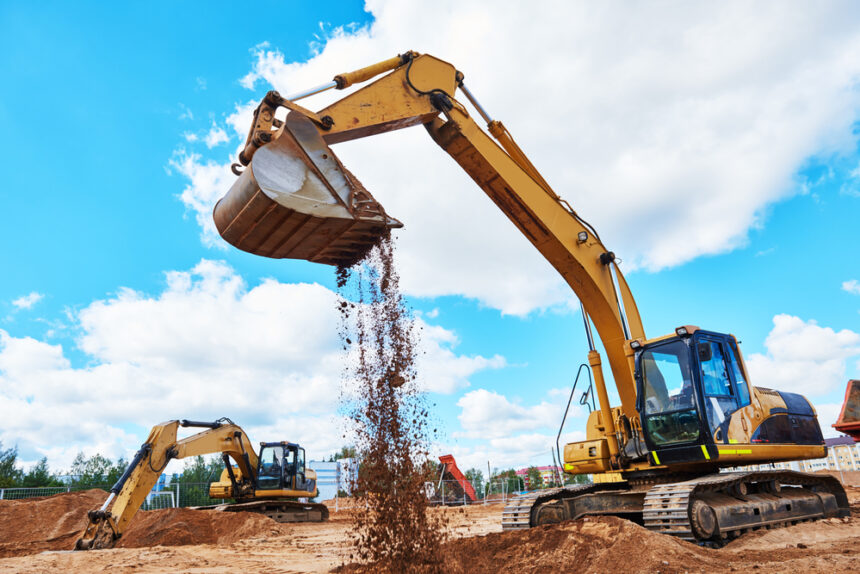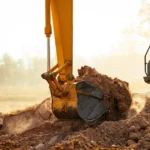Excavation Requirements for New Construction are often overlooked, yet they lay the crucial foundation for any successful building project. Did you know that improper site preparation can lead to costly delays and structural failures? This article is designed for builders, contractors, and project managers who face the daunting challenge of ensuring a stable and compliant construction site. By understanding the essential steps for excavation, you can mitigate risks and streamline your construction process. We will delve into everything from site clearance and precise surveying to the use of heavy machinery and effective drainage systems. Additionally, we’ll discuss the importance of safety protocols and environmental compliance. With this comprehensive guide, you will be equipped to tackle the complexities of site preparation and achieve a solid foundation for your next project. Let’s explore the excavation requirements that will set your construction endeavor up for success.
Preparing the Construction Site
How do you effectively prepare a construction site?
Preparing a construction site is crucial for ensuring a successful build. Start by clearing the area of any vegetation, rocks, and debris to create a clean slate for excavation. Heavy machinery, such as bulldozers, is essential for this task.
Next, engage a land surveyor to accurately measure and mark the site, taking into account drainage and property lines.
- Excavate trenches or pits for the foundation according to detailed construction plans.
- Grade the land to ensure proper drainage and foundation stability, preventing water runoff and erosion.
- Prepare trenches for utilities, aligning them with the construction plans.
This thorough preparation sets your project on a solid foundation. To learn more about optimizing construction processes, see our guide on site management best practices.
Surveying and Layout Planning
How does accurate surveying impact construction projects?
Accurate surveying is crucial for successful construction, as it ensures precise property boundaries and soil assessment. This foundational step prevents future structural issues by allowing for correct excavation and site grading.
Accurate surveying is essential for preventing structural issues through precise boundary and soil assessments.
By measuring meticulously, potential problems related to drainage and existing utilities can be avoided.
- Employ professional land surveyors for expert guidance.
- Utilize advanced surveying technology for enhanced precision.
- Regularly update plans based on survey results to reflect changes.
With careful layout planning, construction projects can proceed smoothly, minimizing delays and costs associated with rework.
For more insights on optimizing construction efficiency, check out our guide on effective project management strategies.
Digging and Soil Removal
How does soil removal impact construction projects?
Soil removal is crucial for establishing a robust foundation in construction. By excavating the site to specified depths, builders ensure stability and adherence to design requirements and building codes.
Utilizing heavy machinery, such as excavators and backhoes, streamlines this process, with the choice of equipment depending on the site size and soil type.
- Conduct a thorough site inspection for obstacles.
- Check soil moisture levels to determine conditions.
- Maintain proper grading to facilitate drainage.
By following local regulations and safety standards, you can mitigate risks and ensure a compliant excavation.
For more detailed guidelines, see our guide on excavation best practices.
Implementing Safety Measures
How can excavation safety be effectively ensured?
Ensuring safety during excavation requires diligent planning and adherence to regulations. Regular site assessments for stability are essential to prevent accidents such as cave-ins, which can compromise both worker safety and project integrity.
Implementing protective systems like sloping or shoring can significantly enhance trench wall support and mitigate risks.
- Conduct evaluations for sites deeper than 5 feet with a qualified individual.
- Provide continuous training and toolbox talks to keep all workers updated on safety protocols.
- Monitor for soil movement and other indicators of danger.
By prioritizing these measures, project managers can create a safer work environment.
For more detailed guidelines on excavation safety, consider reviewing OSHA’s resources on trench safety.
Installing Drainage and Utility Systems
How to Ensure Effective Drainage and Utility System Installation?
To ensure effective installation of drainage and utility systems, start with precise excavation.
Accurate trench measurements and positioning are crucial to prevent future plumbing and electrical complications. Ensuring the right slope and alignment of pipes is essential for optimal drainage, helping to avert blockages and backflow.
- Use excavators and trenchers for efficient digging.
- Follow local regulations regarding trench depth and width for utilities.
- Compact and grade the soil to support utilities and prevent settling.
Professional oversight during the installation process is vital for compliance with safety standards.
For further guidance, refer to our comprehensive guide on proper utility system maintenance.
Building a Stable Foundation
Establishing a stable foundation requires meticulous excavation to ensure lasting durability.
But how can you ensure optimal drainage and utility placement to further enhance your structure’s reliability?
Understanding these factors is crucial for preventing future complications and maintaining the integrity of your building project.
Importance of Proper Excavation
How does proper excavation contribute to building stability?
Proper excavation is crucial for establishing a solid foundation that ensures your building remains secure over time. By focusing on meticulous excavation processes, you can prevent structural issues such as shifting or settling.
Key factors to consider include:
- Depth and stability: Ensures long-term durability.
- Utility installations: Facilitates correct alignment and easy access.
- Grading: Prevents water pooling and potential basement flooding.
Adhering to these elements not only enhances the integrity of the construction but also increases site safety through compliance with OSHA standards.
For more insights, see our guide on effective grading techniques.
Ensuring Foundation Stability
How can you ensure foundation stability after excavation?
Ensuring foundation stability is crucial for any construction project. Begin by carefully determining the excavation depth, typically between 3 to 5 feet, based on soil conditions and the type of structure. This depth is essential for a solid foundation.
Next, prioritize land grading to manage drainage effectively, preventing water accumulation that could weaken the soil and threaten structural integrity.
- Compact the soil to create a robust base.
- Follow local regulations and safety standards.
- Regularly inspect the site for compliance.
By focusing on these steps, you can safeguard your investment and support the long-term success of your building.
For further insights, see our guide on soil compaction techniques.
Addressing Environmental and Erosion Concerns
Effectively managing water runoff and preventing soil erosion during excavation is crucial for site stability.
But how can you further enhance these efforts to protect local ecosystems? Exploring innovative erosion control techniques can provide valuable solutions to ensure compliance with environmental regulations.
Managing Water Runoff
How can excavation sites effectively manage water runoff?
Managing water runoff during excavation is crucial for both site protection and environmental conservation. Effective grading ensures that land slopes away from foundations, which helps prevent erosion and maintains soil stability.
To redirect excess water, consider installing drainage systems such as French drains or swales, which can significantly reduce erosion risks.
- Regularly inspect erosion control measures for effectiveness.
- Monitor soil moisture levels to identify potential wet soil risks.
- Ensure compliance with local environmental regulations.
By implementing these strategies, you can safeguard the site and the surrounding ecosystem.
For more tips on maintaining site integrity, see our guide on erosion control methods.
Preventing Soil Erosion
How can construction sites effectively prevent soil erosion?
Preventing soil erosion is crucial for construction sites, as it directly impacts foundation stability and sediment control. Implementing effective erosion control measures can reduce soil loss significantly.
Key strategies include establishing vegetation cover, utilizing sediment basins, and applying proper grading techniques. Regular monitoring during heavy rainfall is essential to manage soil displacement effectively.
- Use sediment basins to capture runoff.
- Implement vegetation to stabilize soil.
- Regularly maintain drainage systems for optimal water management.
By prioritizing these erosion prevention methods, you not only protect the environment but also ensure your construction project’s success while complying with regulations.
For further insights, see our guide on sustainable construction practices.
Frequently Asked Questions
What Is the 5 4 3 2 1 Rule for Excavation?
FAQ
What is the 5 4 3 2 1 rule for excavation? The 5 4 3 2 1 rule for excavation is a safety guideline assessing soil types, trench shoring, and necessary equipment to ensure safe digging practices.
How does the 5 4 3 2 1 rule ensure safety? By systematically evaluating factors like soil stability and trench support, the 5 4 3 2 1 rule for excavation helps prevent accidents and injuries on-site.
What are the key considerations in the 5 4 3 2 1 rule? Key considerations include soil testing, trench shoring, equipment type, and site preparation, all crucial elements of the 5 4 3 2 1 rule for excavation.
Why is soil testing important in the 5 4 3 2 1 rule? Soil testing is essential in the 5 4 3 2 1 rule for excavation to determine soil strength and type, which affects trench safety and stability.
Does the 5 4 3 2 1 rule apply to all excavation projects? Yes, the 5 4 3 2 1 rule for excavation applies universally, ensuring safe practices in various soil conditions and project types.
What additional factors should be considered with the 5 4 3 2 1 rule? Alongside the 5 4 3 2 1 rule for excavation, consider site drainage, utility locations, necessary permits, and environmental impacts for comprehensive safety.
What Are the Regulations for Excavation?
FAQ
Q: What are the key regulations for excavation safety? A: Key regulations for excavation safety include soil testing, obtaining necessary permits, and ensuring site preparation.
Q: How can I ensure compliance with excavation regulations? A: Compliance with excavation regulations can be ensured by focusing on drainage systems, utility locating, and environmental impact assessments.
Q: What should I do before starting an excavation project? A: Before starting an excavation project, conduct soil tests, prepare the site, and check for any existing utilities.
Q: What training do workers need for excavation safety? A: Workers should receive training on equipment maintenance, erosion control, and safe excavation practices to comply with regulations.
Q: Why is soil testing important in excavation? A: Soil testing is essential for understanding ground conditions and ensuring safety, making it a crucial part of excavation regulations.
Q: What role do permits play in excavation projects? A: Permits help ensure that excavation projects meet local laws and safety standards, making them vital for compliance.
What Is the 6 Foot Rule for Excavation?
FAQ
Q: What is the 6-foot rule for excavation? A: The 6-foot rule for excavation requires protective systems for trenches deeper than 5 feet to ensure worker safety.
Q: Why is the 6-foot rule important? A: The 6-foot rule is crucial for preventing accidents and ensuring safe trenching practices in construction sites.
Q: When does the 6-foot rule apply? A: The 6-foot rule applies to any trench excavation that exceeds 5 feet in depth.
Q: What safety measures are included in the 6-foot rule? A: Safety measures under the 6-foot rule include proper shoring, trench boxes, and regular site inspections.
Q: Who enforces the 6-foot rule in construction? A: The Occupational Safety and Health Administration (OSHA) enforces the 6-foot rule to protect workers during excavation.
What Is the Rule for Excavation?
FAQ
Q: What are the basic rules for excavation safety? A: Follow excavation safety rules by planning thoroughly, assessing the site, choosing the right tools, and ensuring soil stability.
Q: How can I ensure excavation safety at a construction site? A: To guarantee excavation safety, train workers, identify potential hazards, and adhere to legal regulations.
Q: Why is soil stability important for excavation safety? A: Soil stability is crucial for excavation safety to prevent collapses and ensure the integrity of the site during work.
Q: What should I consider when planning for excavation safety? A: When planning excavation safety, evaluate the site conditions, select suitable equipment, and train personnel on safe practices.
Q: How do I minimize environmental impact during excavation? A: To minimize environmental impact, follow excavation safety guidelines, manage waste properly, and protect surrounding ecosystems.
Conclusion
In conclusion, proper excavation is crucial for the success of your construction project. By implementing the strategies outlined in this article, you can prevent costly foundation failures and ensure a solid base for your building. This not only enhances structural integrity but also contributes to long-term durability and safety. Remember, effective site planning and addressing environmental concerns are key components of a successful excavation process. To further enhance your knowledge, consider exploring more tips on construction practices or reading related guides that can help you take the first step toward a successful project.


